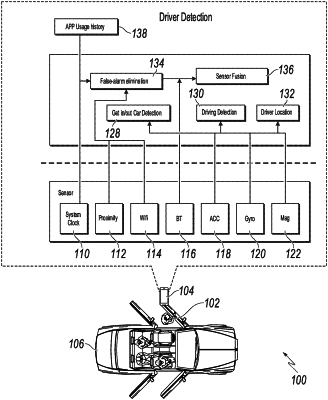| CPC B60W 40/08 (2013.01) [B60L 3/12 (2013.01); B60W 40/10 (2013.01); B60W 2540/223 (2020.02)] | 18 Claims |

|
1. A computer-implemented method performed by a client device having one or more processors, the computer-implemented method comprising:
monitoring, by the one or more processors, data provided by an accelerometer, a magnetic sensor, and a gyroscope associated with the client device, wherein the data comprises an accelerometer sensing result, a measurement result of a magnetic field related to a vehicle, and a gyroscope measurement result;
determining, by an inertial measurement unit (IMU)-compensated compass based on the accelerometer sensing result, the measurement result of the magnetic field related to the vehicle, and the gyroscope measurement result, whether the data indicates a vehicle entrance event associated with the vehicle, wherein the vehicle entrance event comprises a user turning to sit on a seat when entering the vehicle; and
in response to determining that the data indicates the vehicle entrance event associated with the vehicle:
determining, by the one or more processors, one or more micro-activities associated with the vehicle based on data from at least one of the accelerometer, the magnetic sensor, the gyroscope, and one or more other sensors associated with the client device;
providing, by the one or more processors, results from each of the one or more micro-activities to a trained model associated with the client device; and
in response to providing the results to the trained model, identifying, by the one or more processors, one or more vehicular events in a time sequence based on the one or more micro-activities associated with the vehicle, wherein the one or more vehicular events include at least an event descriptive of a user's location relative to a vehicle, and wherein identifying the one or more vehicular events comprises identifying the one or more vehicular events based on a predetermined relationship between a plurality of vehicular events and a plurality of micro-activities, and wherein the predetermined relationship indicates that each vehicular event corresponds to a transition between two micro-activities.
|